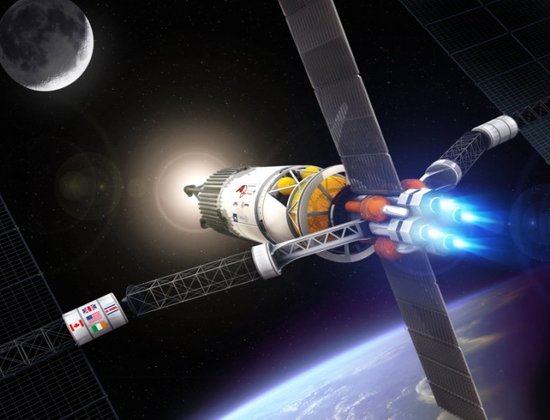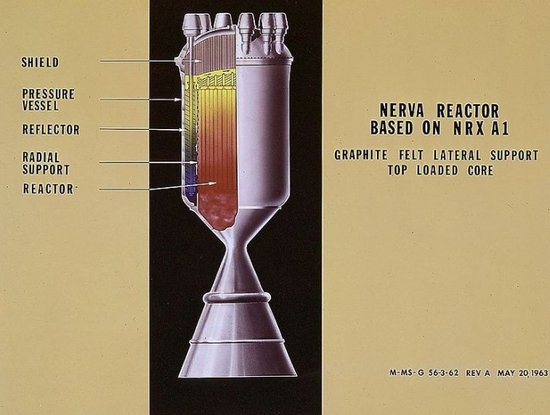According to foreign media reports, John Greensfield, deputy director of NASA's Scientific Mission Council, believes that humans must develop nuclear fusion rockets. Traditional chemical rockets are not suitable for interstellar travel, even within the solar system. In interplanetary flight, nuclear-powered rockets will provide faster speeds and powerful energy sources, and they will also solve the energy problems encountered when landing on other planets. The nuclear fusion rocket will greatly shorten the time for deep space flight, and it will open up the way for mankind to fully explore and use the solar system. NASA is currently developing a nuclear power rocket power system. Such engines will be the next major leap in science and technology. It is conceivable that if We can travel to Saturn within a month or two, what a wonderful scene.

Nuclear power technology can provide a powerful source of energy and endurance for interstellar navigation. If the journey to Mars can reduce the risk of astronauts being exposed to cosmic rays, human beings are bound to abandon traditional chemical energy rockets if they need to enter deep space. .

The NERVA nuclear rocket engine demonstrated by NASA and other institutions in last century was used for the Mars tour project.
Conventional rocket engines can be classified into solid and liquid engines. Solid rocket motor fuels are solid, characterized by simple maintenance and lighter construction. They are suitable for low-mass thrust requirements and are currently used in small and medium-sized rockets. Liquid rocket motor fuel is mainly liquid. For example, the space shuttle uses liquid hydrogen and liquid oxygen as its power, which can quickly release powerful energy. Applicable to large rockets, the specific impulse is much better than that of solid rocket motors. However, the structure of liquid rocket motors is relatively complex. It is dangerous to add fuel and maintain and replace. The Long March 2F rocket that was launched on June 11 was a typical liquid fuel rocket. Liquid rocket motors were used in the four bundled boosters, core level, and core level 2.
Some launch vehicles use solid and liquid engines as hybrids. For example, the Ariane 5 ES rocket uses solid rockets. The space shuttle also uses solid rocket boosters. NASA experts believe that traditional chemical energy rockets can allow humans to reach the edge of the distant sun, but it takes more time, such as the journey to and fro exploration of Mars, the time mentioned in NASA's schedule is 2030s. In the mid-term, it will take about 500 days. If we can speed up the flight and cooperate with an effective deceleration engine, we can reduce the radiation dose that astronauts receive in space flight. Shorter journeys can also save food and water.
NASA and research institutes around the world are developing advanced spacecraft propulsion technologies, including “rally-advanced†engines, material and antimatter power systems that are only heard in science fiction, although these power systems are As far as aerospace technology is concerned, it may not be reachable, but there may be other major discoveries in this exploration process. In addition to nuclear power engines, solar sail technology seems to be the easiest space power currently available. Currently, NASA and the Japan Space Agency have tested space solar sail technology, but space-powered solar sail ships may only be suitable for ultra-long distances. In space flight, the acceleration process is slow.
Scientists believe that nuclear power rockets will be able to realize new aerospace power for some time in the future, and nuclear fusion technology may also need a long way to go for spacecraft. At present, there are no mature controlled nuclear fusion reactors, and nuclear fission technology is used to develop power. The system may also be a way. The NASA Advanced Concept Research Institute has proposed several nuclear fusion engine programs. According to scientists at the University of Washington, the use of nuclear fusion technology can greatly shorten the time of Mars travel. We can send astronauts to Mars within a month. , much less than 500 days.
Although scientists have invested a lot of money in the development of controlled nuclear fusion technology in the past few decades, there is still no practical fusion reactor, let alone a spacecraft as a power system. Glensfield thinks nuclear fusion technology. In the next 30 years, breakthroughs in aerospace power are needed. If humans want to enter the deep space of the distant space, the power system needs to make a revolutionary breakthrough. Research on controlled nuclear fusion on the earth should be accelerated, and then begin to test the space nuclear Fusion power.
At the 36th Propulsion Conference, NASA proposed a nuclear-powered rocket technology that can be used to complete exploration of the planets inside the solar system with just one launch. In 1946, NASA and the U.S. Air Force jointly launched the NERVA program and the Rover plan to create nuclear power propulsion technology. The NERVA engine includes reactors, turbopumps, and propellant storage equipment; Soviet researchers in the 1950s It is planned to install four nuclear-powered turbine engines on the aircraft. These nuclear power technologies are based on nuclear fission technology and we have relatively mature technologies in this respect.
Common nuclear fission technology engines include nuclear pulse rockets, nuclear rockets, nuclear thermal rockets, and nuclear rockets. Take the nuclear thermal rockets as an example, the reactor structure is much smaller than that of land-based nuclear power plants, and the purity of uranium-235 is more demanding. High, reaching over 90%, under the high specific impulse requirement, the core temperature of the engine will reach around 3000K, and materials with excellent high temperature resistance are required. When nuclear power technology is used in the space environment, it will also be exposed to the danger of nuclear radiation. If these difficulties are overcome, then nuclear fission engine technology can also serve the exploration within the solar system, even if nuclear fusion engines cannot be realized. People's spacecraft's stellar journey can bring powerful endurance, which is unmatched by traditional chemical energy engines.
we manufacture according to Chinese Standard GB/T20878-2007.
The grade 2205 is equivalent to Chinese Grade 022Cr23Ni5Mo3N.
The grade availability is as below:
UNS S32304(23Cr-4Ni-0.1N)
UNS S31803(SAF2205)00Cr22Ni5Mo3N
UNS S31500(3RE60)(22Cr-5Ni-3Mo-0.15N)
UNSS32550(25Cr-6Ni-3Mo-2Cu-0.2N)
UNS S32750(SAF2507)(25Cr-7Ni-3.7Mo-0.3N)
Duplex Stainless Steel Pipes
Duplex Stainless Steel Pipes,Super Duplex Stainless Steel Pipe,Duplex Stainless Steel Seamless Pipe,Duplex Welded Stainless Steel Pipe
Torich International Co.,Ltd--The Steel Tube Maker , http://www.chinasteeltubepipe.com